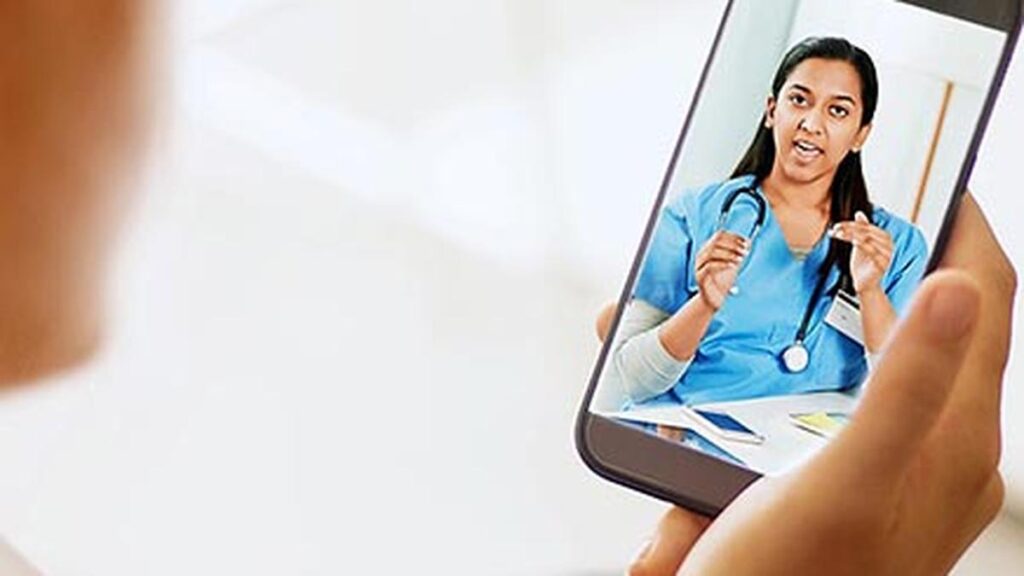In 2024, google processed more than 2 trillion searches, averaging 8.5 billion per day. Of this 5% were health related, that is 425 million per day or 18 million per hour!!
The internet, we must remember, is a double edged weapon. Good and evil are two sides of the same coin. As the largest, most accessible source of health information, available in multiple languages, the internet can empower anyone. By promoting health literacy, we can equip patients with the understanding they need to take control of their well-being, driving prevention and ultimately improving health outcomes.

Need for digital health literacy in India
India has made remarkable progress in promoting digital literacy, for instance, women selling flowers in their seventies confidently uses technology, displaying QR codes for transactions as small as ₹10, and patiently assisting customers who struggle with digital payments. Similarly, there is a pressing need to create awareness and foster eHealth literacy, empowering patients to effectively navigate and utilise digital health resources, and become informed and engaged ePatients.
Support Groups with an online presence (endorsed by appropriate professional society) are reliable. This is a valuable source of patient perspectives, complementing the clinician’s advice. Health information in social media ( Facebook, WhatsApp, You Tube, X, Instagram, Linkedin, Reddit, Pinterest, Tik Tock etc.) if reliable, could increase patient’s knowledge, competence and decision making skills.
Social media platforms offer a unique opportunity for individuals to share their personal health experiences and connect with others who may be going through similar situations. However, it’s essential to exercise caution when consuming health information online. As the Latin phrase “caveat emptor” (let the buyer beware) suggests, it’s crucial to be mindful that anyone can upload and remove information effortlessly.
Identifying misinformation on mobile health apps and online sources
The quality of health information provided by mobile apps varies significantly. Notably, a study found that 95% of cancer information apps designed for healthcare workers contained scientifically valid information. In contrast, only 32% of cancer information apps intended for the general public provided accurate information. Furthermore, the health app industry has largely evaded regulation and oversight. The accuracy of online symptom trackers in providing correct diagnoses is alarmingly low, with some studies suggesting a success rate as low as 34%. Additionally, these tools often neglect to consider crucial factors such as personal and family medical history.
Anyone with access to the internet and basic computer literacy can upload any information online. Online health information is often not peer reviewed. A forward from a friend or colleague does not mean that the information is accurate, complete or relevant.
Social media influencers often present their content in a highly engaging manner, making it trend quickly. However, despite the attractiveness of the content, it is essential to verify the original source of the information. Fact-checking websites can also be a valuable resource.
As the internet has become a popular and frequently consulted source of medical information, it is crucial to exercise caution when sharing content on social media also. Sharing a post without confirming its trustworthiness can inadvertently contribute to the spread of misinformation, which can have dangerous and even harmful consequences. Searching for reliable, trustworthy, accurate information pre supposes a basic knowledge to evaluate contents.
Developing a health “app” does not pre suppose domain expertise. Understanding credibility and background of the developer is crucial. “If it sounds too good to be true, it probably is.”
Red flags include “breakthrough” remedies, secret” ingredients, sensational language, unvalidated claims outdated references, anonymous authors, broken links and poor website design. Misinformation spreads at unprecedented speed and scale, particularly false news stories. A user exposed to misinformation once, could see more and more of it over time, further reinforcing one’s misunderstanding.
How to spot reliable health information online
When evaluating the reliability of online health sources, look for key markers such as websites with .edu and .gov suffixes, references in peer-reviewed journals, and recently updated information. Additionally, ensure the site has an HTTPS/SSL certificate, indicating a secure connection.
Carefully examine the site’s objective, management, and original sources of information. Check the credentials of authorities certifying the content and verify the authors’ competence, credentials, and credibility. A reliable site should also provide clear disclaimers and warnings. While engaging multimedia features like graphics, photographs, and videos can enhance the user experience, they should not compromise the accuracy and relevance of the information provided. Furthermore, complex concepts should be explained in simple language, and the site should demonstrate a commitment to frequent revisions and updates.
Concerns in evaluating health information sources online
There are definitely concerns in evaluating health information available online, often, commercial sites and personal blogs lead to conflict of interests, sensationalise and publishe exaggerated claims; there is a lot of misleading health information online, sometimes the ccuracy and reliability of information provided cannot be verified. The authors are sometimes anonymous, or the sources they quote in support of their information are obscure or anonymous. There is also the question about what information about users does the site collect and why?
Evaluating health information online is a daunting task, vastly different from assessing peer-reviewed, evidence-based scientific literature in print. The internet’s open nature allows anyone, including unqualified individuals and con artists, to publish misinformation, making it challenging to separate fact from fiction. Attractive websites, engaging audio, and video clips can be deceiving, while sales hype often masquerades as credible advice, leading to unwarranted trust. Consequently, the quality of online health information is alarmingly variable, and sometimes downright misleading, emphasising the need for a critical and discerning approach when navigating online health resources.
Dr. K. Ganapathy is a former distinguished visiting pofessor, IITKanpur, former president of the Neurological Society of India, Indian Society for Stereotactic & Functional Neurosurgery and Telemedicine Society of India. He can be reached at [email protected]
Published – April 01, 2025 02:59 pm IST

